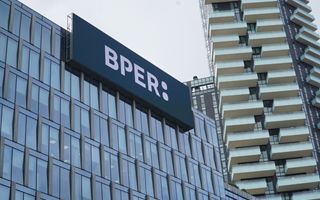(Finance) – After the first ones goals defined last year relating to highly carbon-intensive sectors, such as electricity production and the extraction, processing and distribution of oil and gas, Bperfollowing joining the Net-Zero Banking Alliance (NZBA) of 2022, has identified additional objectives of decarbonisation of its portfolios for three other high emission intensity sectors. The Bank has integrated the pursuit of the objectives set into its business, starting from the evolution of policies and processes credit and the structuring of financing solutions to support businesses in realizing their eco-sustainable transition paths.
“Bper strengthens its commitment to the ecological transition, setting new decarbonisation objectives in line with the requirements of the Net-Zero Banking Alliance”, declares Simon MarcucciChief Financial Officer of the Bank. “Through targeted actions, we confirm our role as promoters of sustainable change, actively supporting businesses on their paths towards a low-emission future. We will constantly work to update and expand our targets, extending our commitment towards key sectors with high emission intensity, with the aim of concretely contributing to carbon neutrality by 2050”, he added.
The calculation of sector objectives Iron And Steel And Aluminumto 2030, refers directly to the Net Zero 2050 scenario defined by the International Energy Agency (IEA), in line with the requirements of the Net-Zero Banking Alliance.
For the sector Iron And Steel a 27% reduction in emission intensity is expected at portfolio level, from a base of 275 tonnes of CO2 equivalent per million euros disbursed in the sector (275 tCO2e/€m) in 2023 to an average value of 201 tonnes of CO2 equivalent per million of euros disbursed in the sector (201 tCO2e/€m) by 2030. The objective set refers to financed emissions equal to at 127 thousand tonnes of CO2 equivalent (127 thousand tCO2e), concerns iron and steel production activities and takes into consideration the Scope 1 and 2 emissions of companies.
For the sector Aluminum instead, the aim is for a 24% reduction in emission intensity at portfolio level, from a base of 460 tonnes of CO2 equivalent per million euros disbursed in the sector (460 tCO2e/€m) in 2023 to an average value of 350 tonnes of CO2 equivalents per million euros disbursed in the sector (350 tCO2e/€m) by 2030. The objective set refers to financed emissions equal to at 74 thousand tonnes of CO2 equivalent (74 thousand tCO2e), concerns aluminum production activities and takes into consideration the Scope 1 and 2 emissions of companies.
Finally, for the sector Properties Commercial a 47% reduction in emission intensity at the level of the financed property is expected, from a base of 37 kilograms of CO2 equivalent per square meter (37 kgCO2e/m2) in 2023 to an average value of 19 kilograms of CO2 equivalent per square meter (19 kg CO2e/m2) by 2030. The objective set refers to financed emissions of the properties in the portfolio equal to 150 thousand tons of CO2 equivalent (150 thousand tCO2e) and concerns commercial real estate mortgages financed by the Bank.
The calculation of the objective, to 2030, refers directly to the reference scenario of the Carbon Risk Real Estate Monitor (CRREM), specific for the real estate sector developed at an Italian level to achieve net zero CO2 emissions by 2050.
